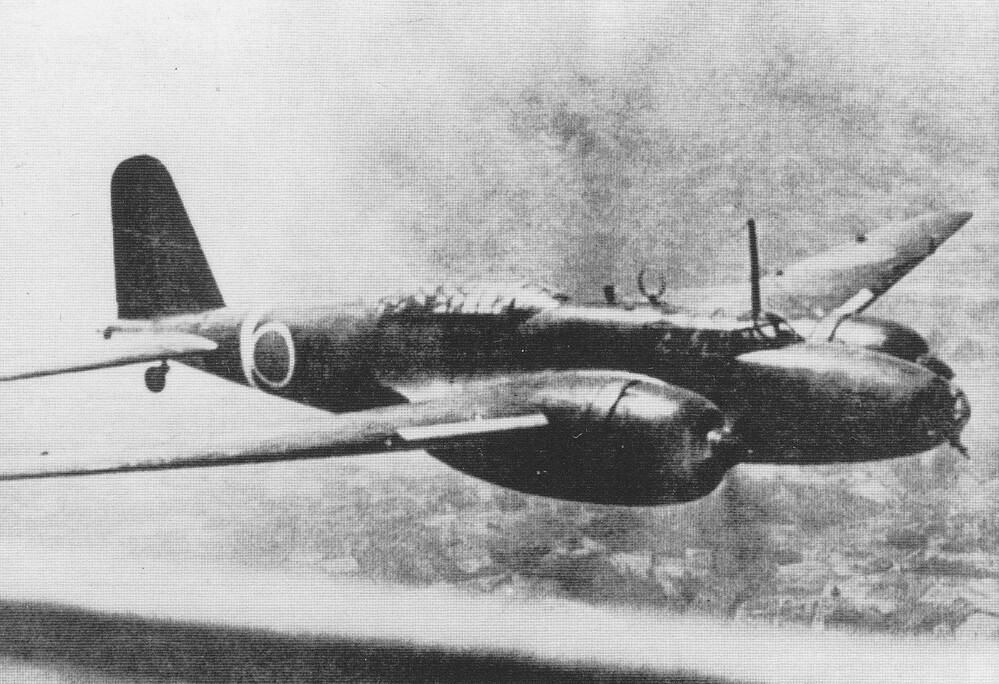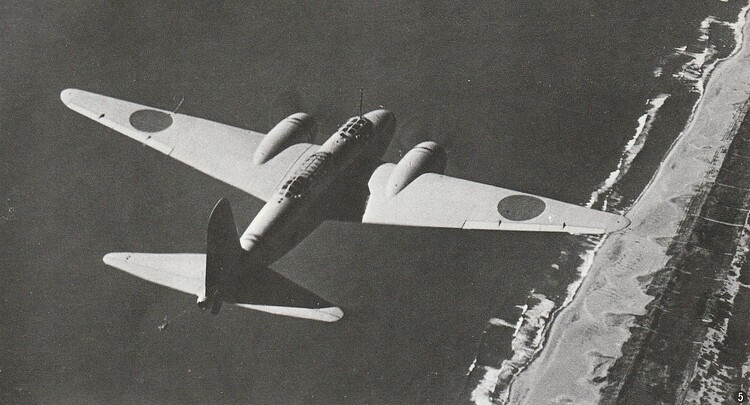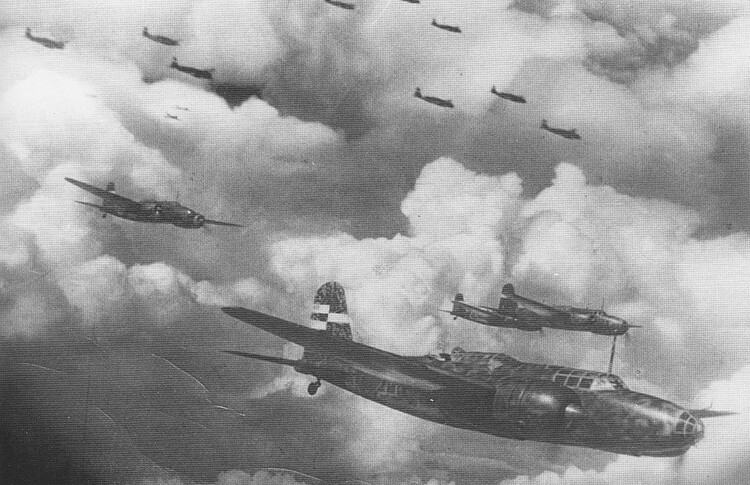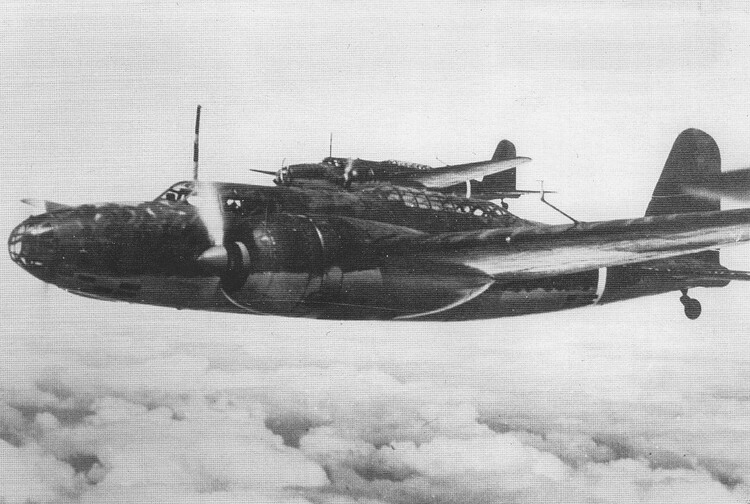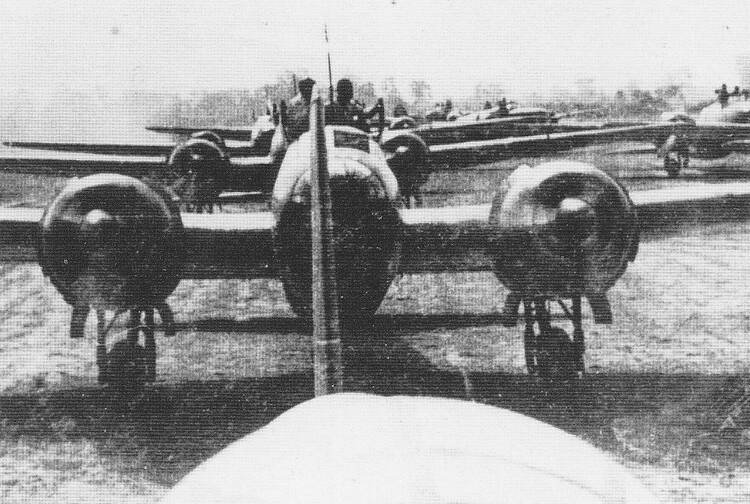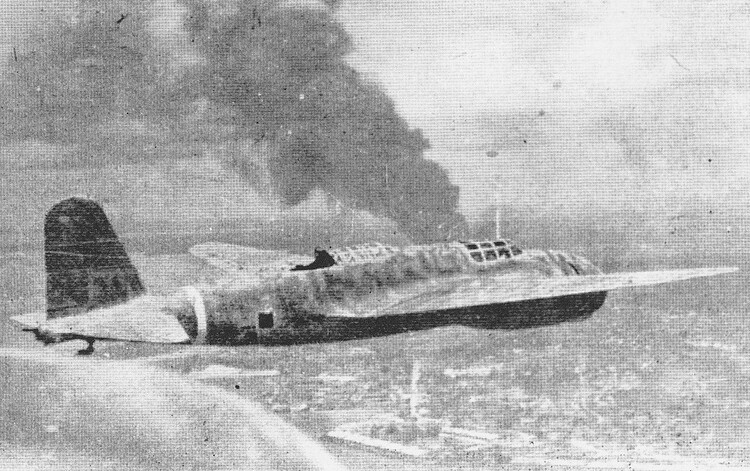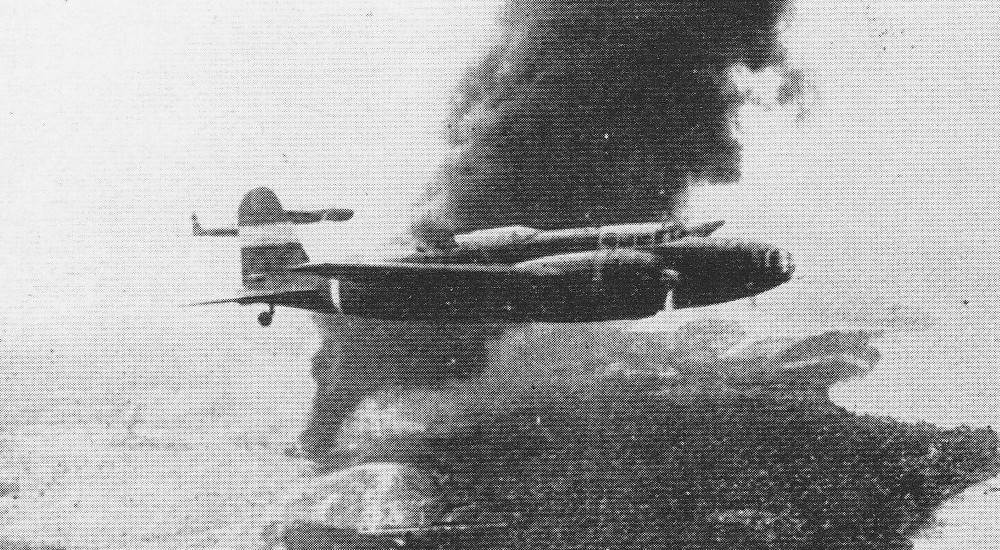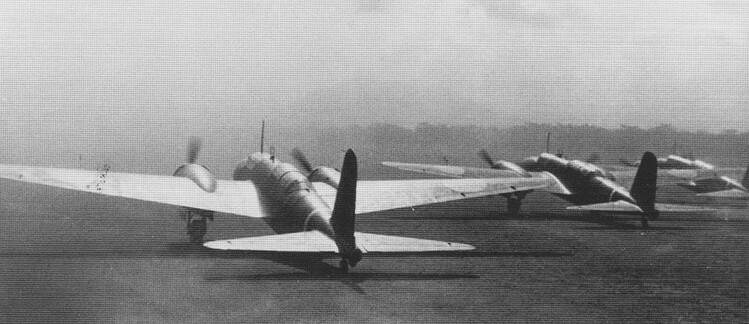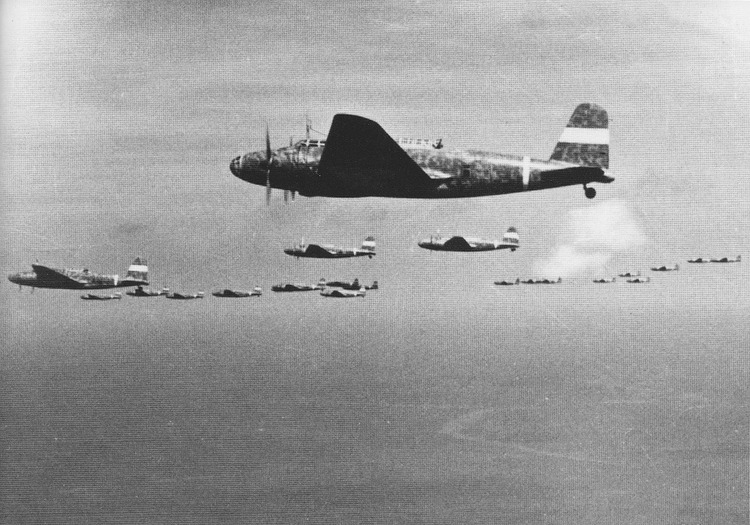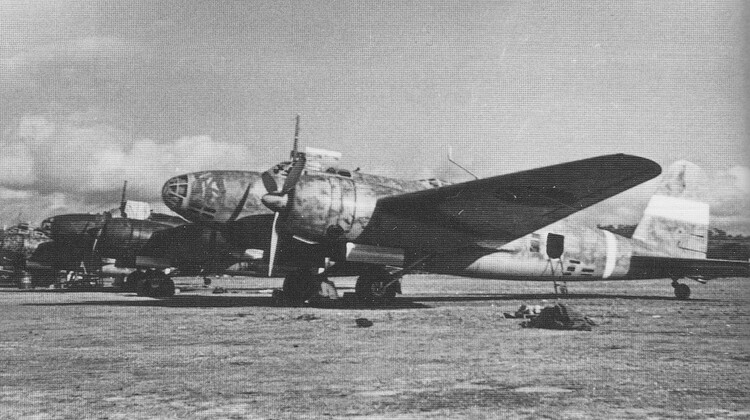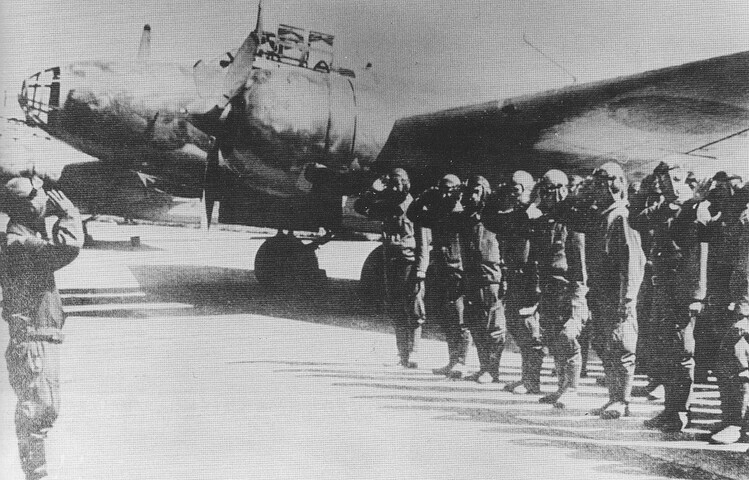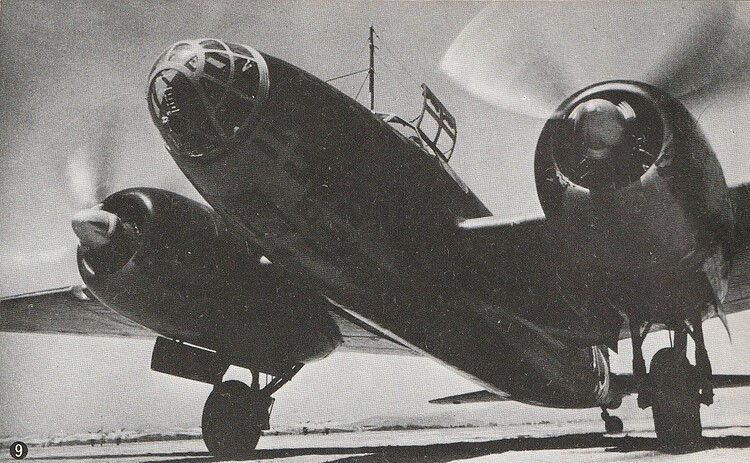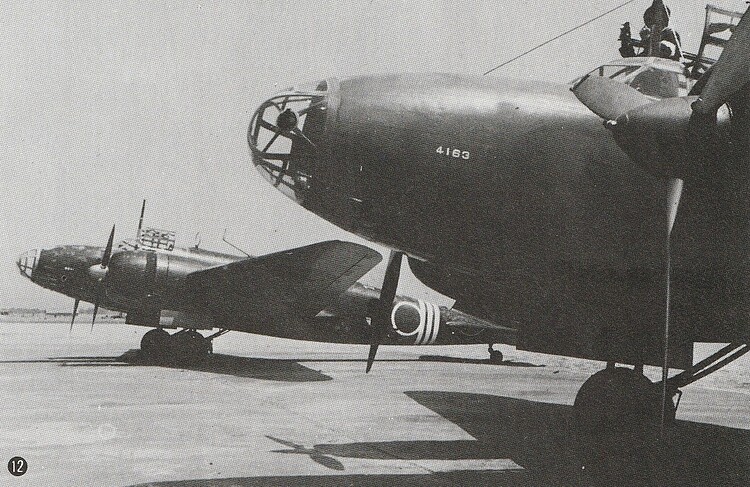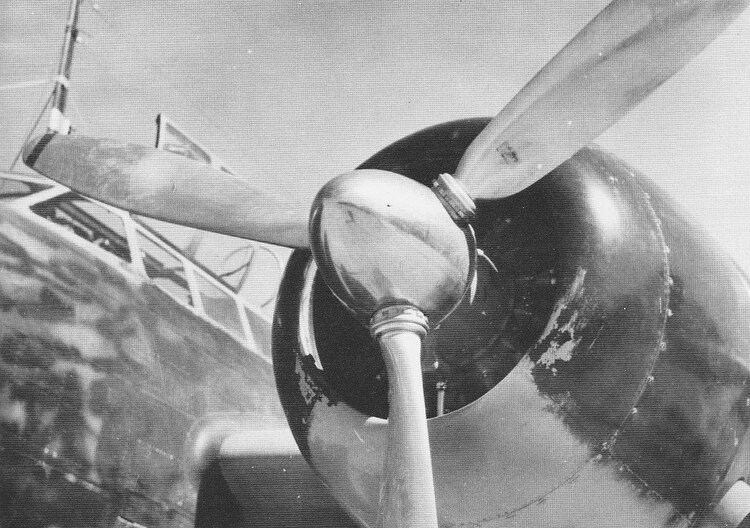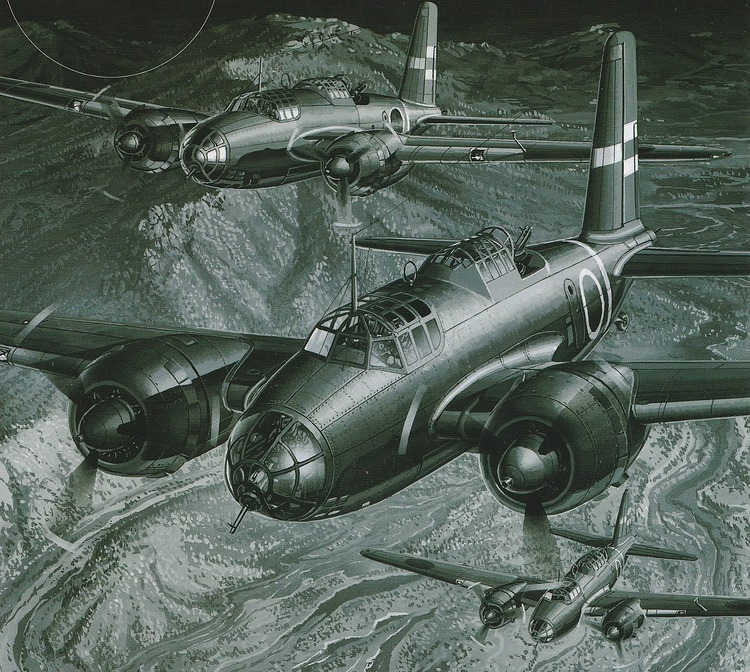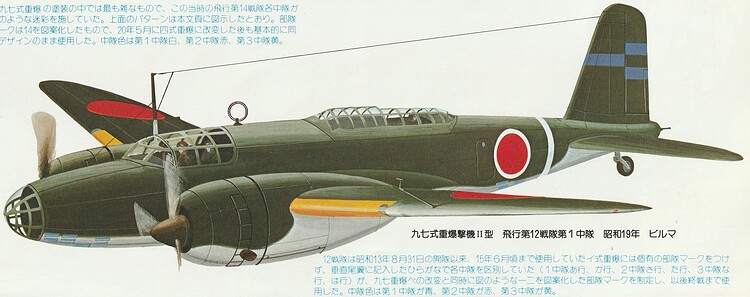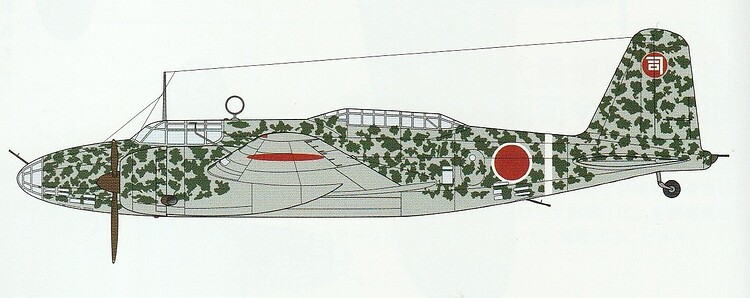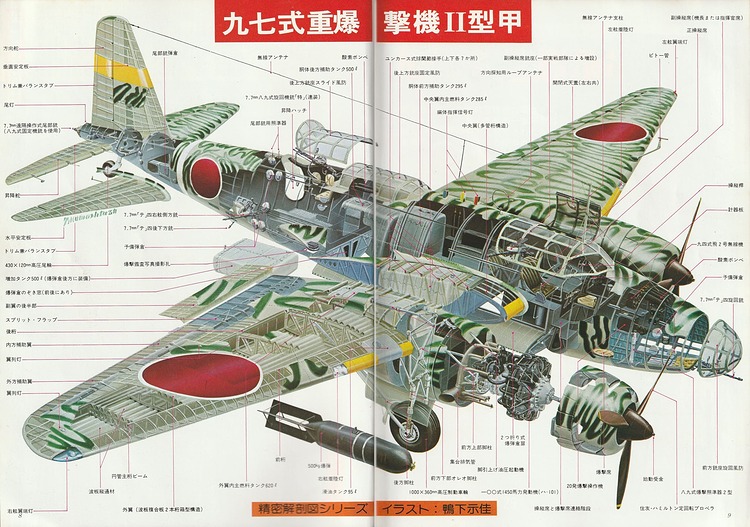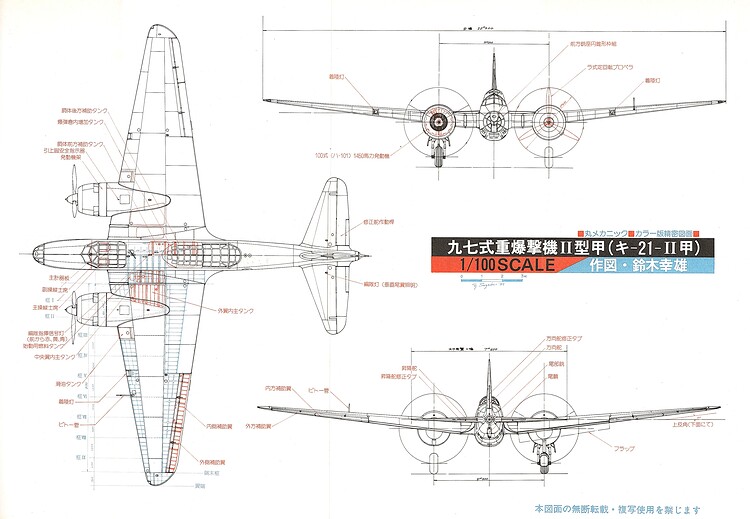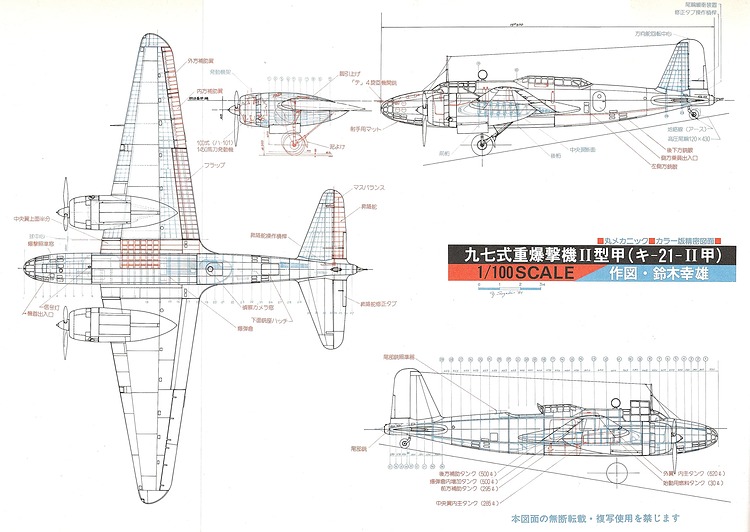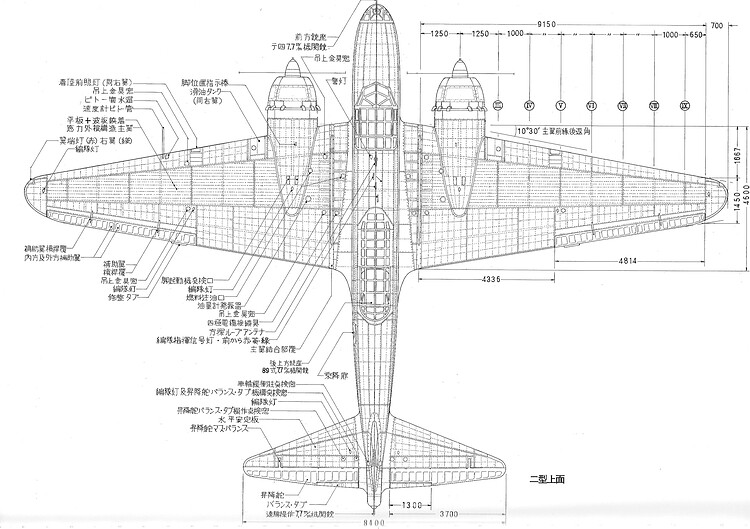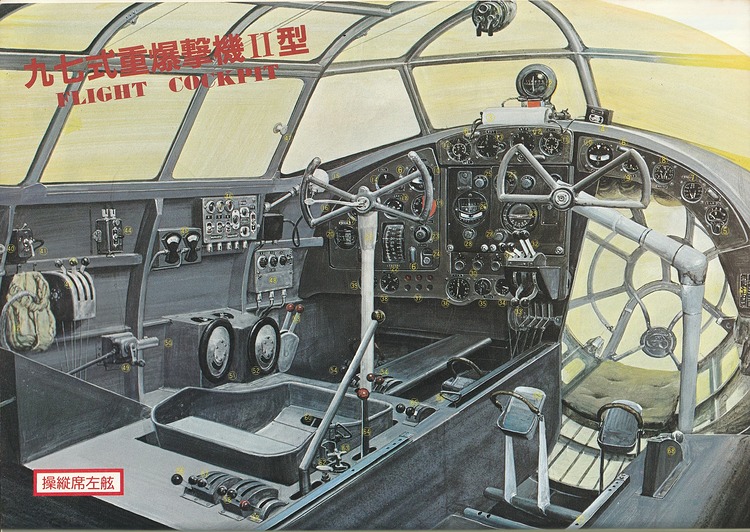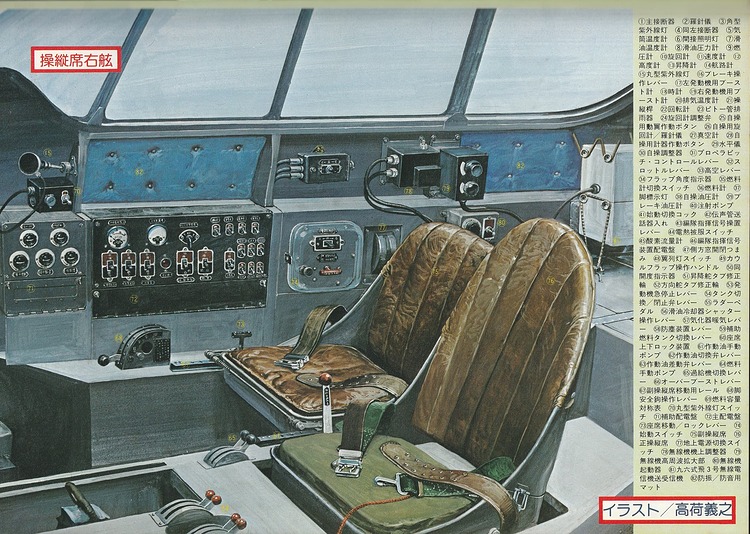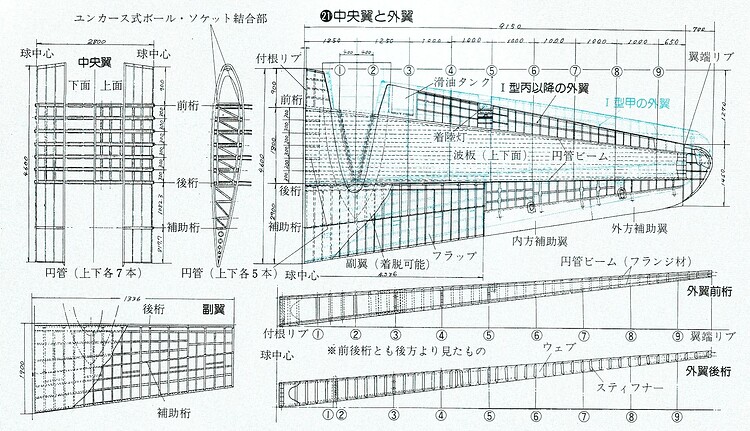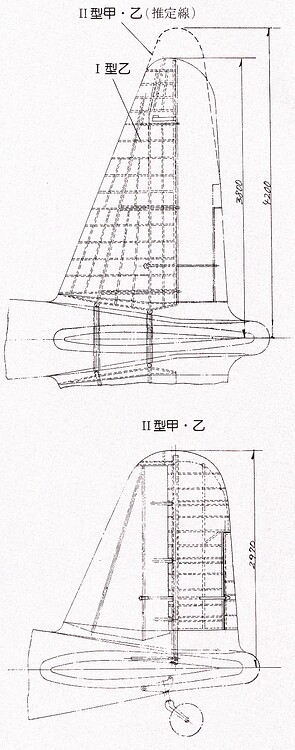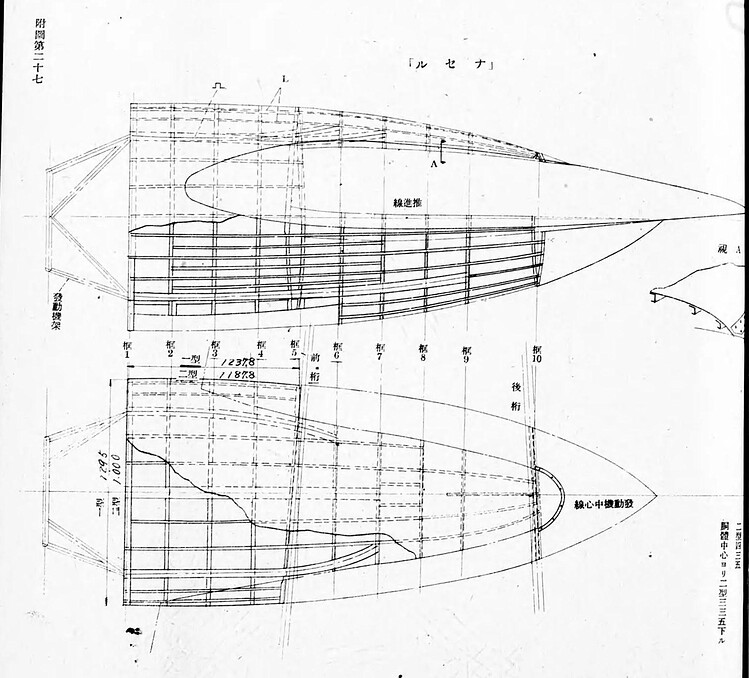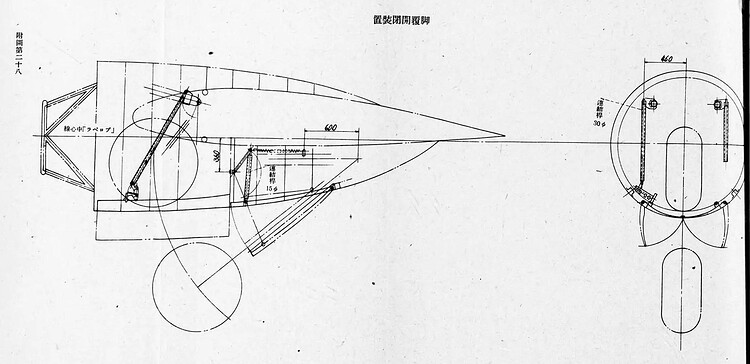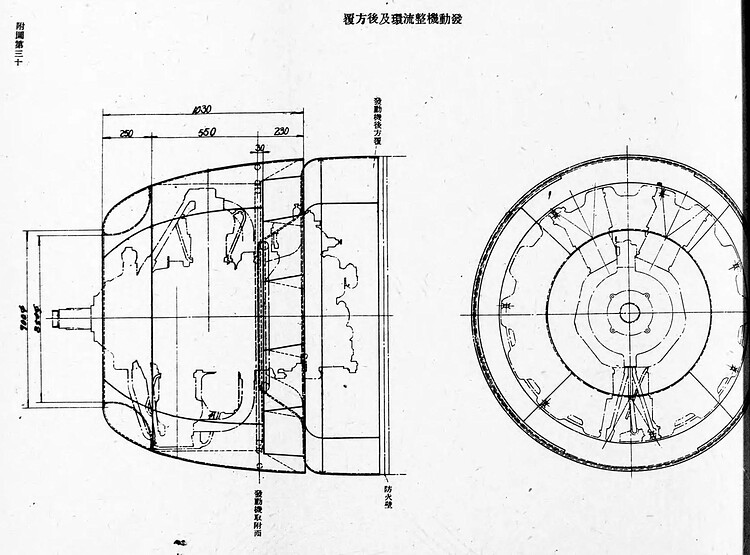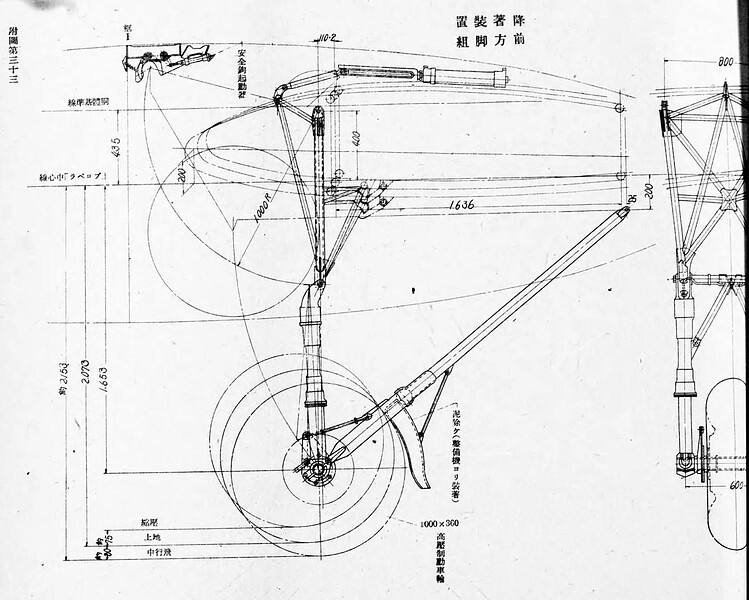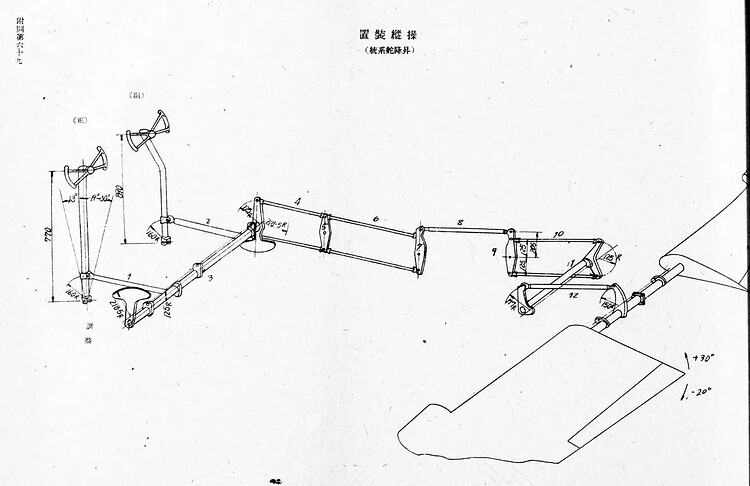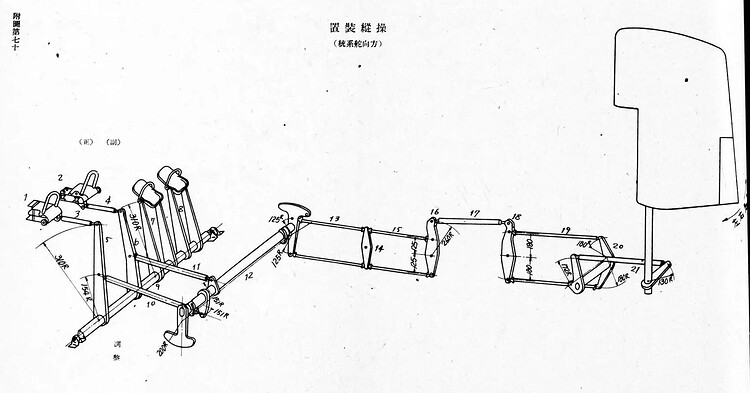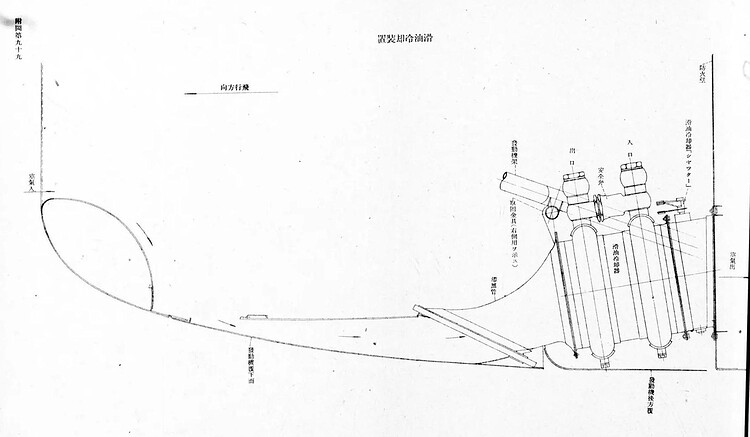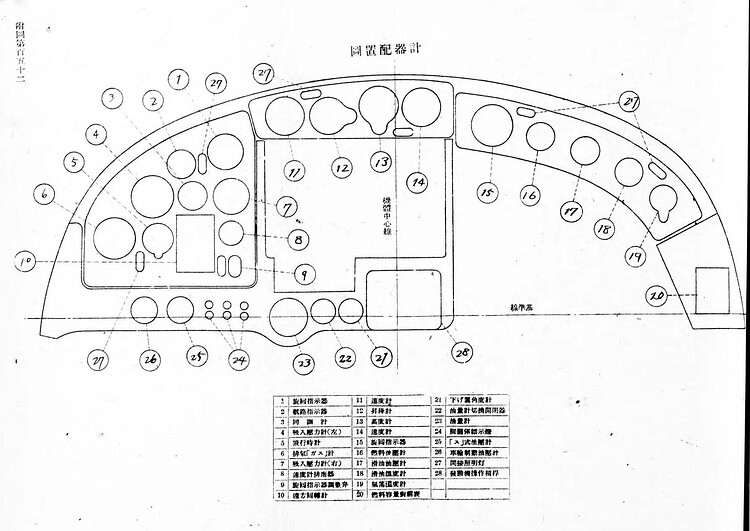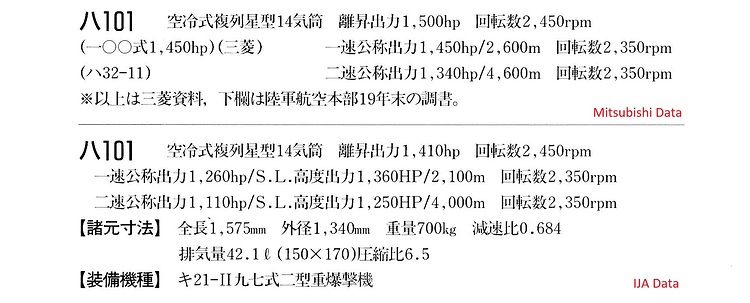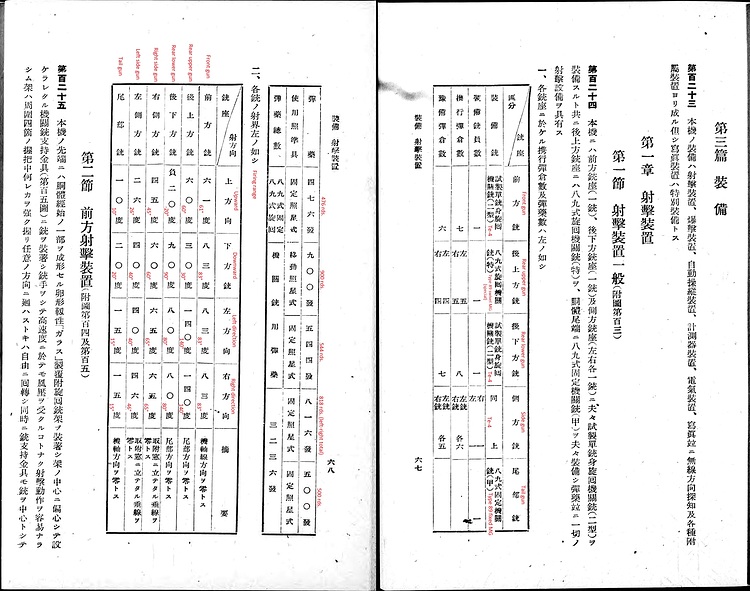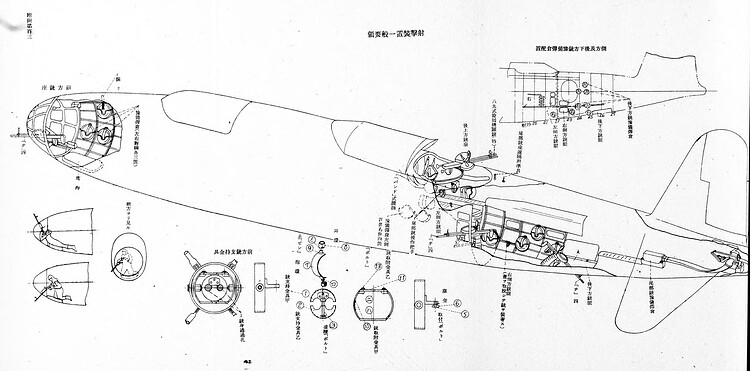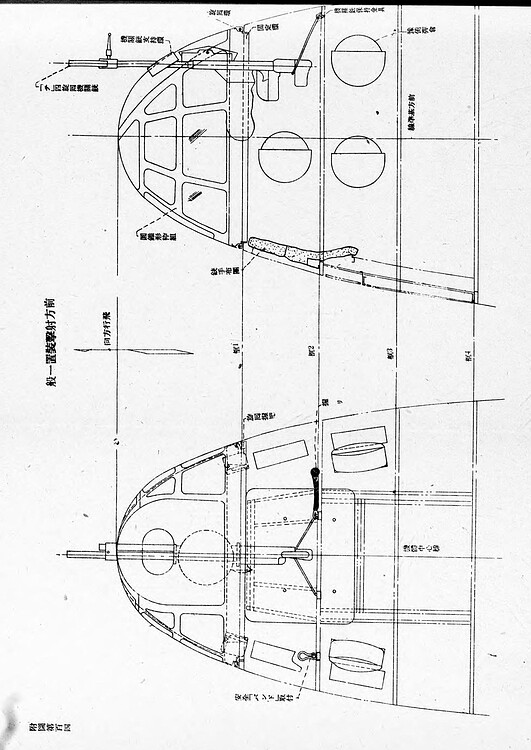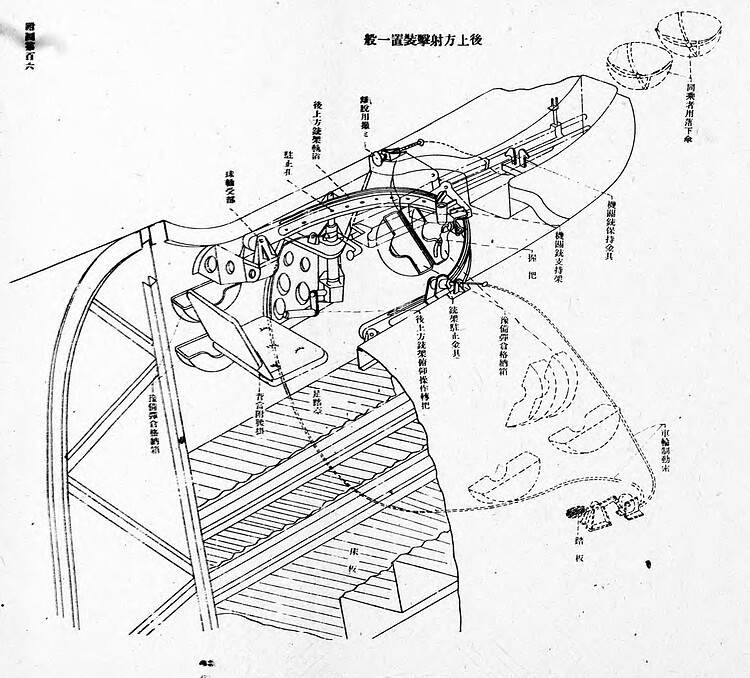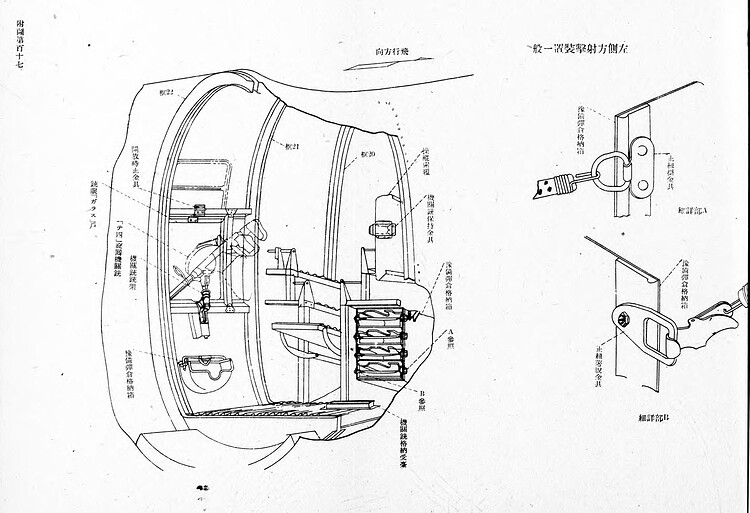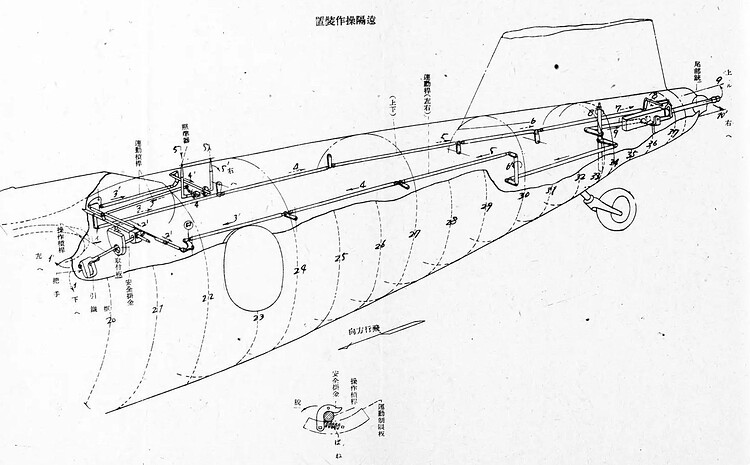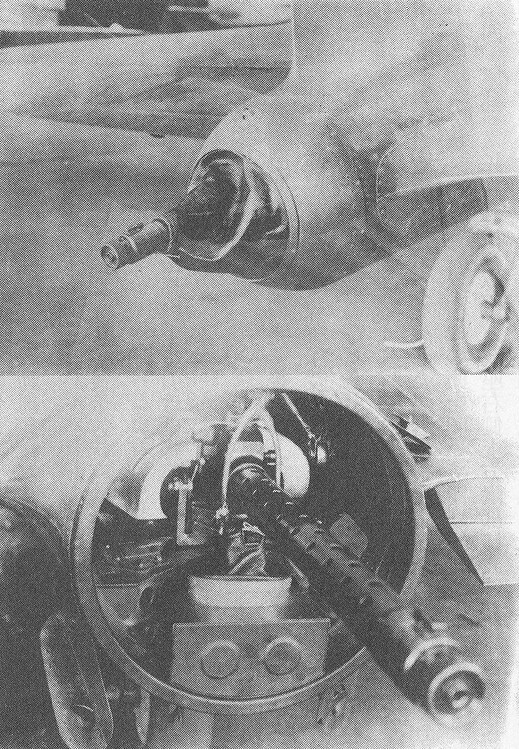- Yes
- No
Mitsubishi Ki-21-II Kō (九七式重爆撃機二型甲 キ21-II甲)
The Ki-21-II Ko(a) is a production model that underwent major modifications from the Ki-21-I, including engine replacement. A total of 590 units were produced between 1940 and 1942.
History
On November 14, 1939, instructions were issued to develop a prototype of the Ki-21-II, an upgraded version of the Ki-21.
The previous Ki-21-I had been modified to meet requests from combat units for increased defensive firepower, with additional machine guns installed. Additionally, the area of the horizontal tailplane had been expanded to ensure pitch stability, resulting in increased weight. Furthermore, the Ha-5 and Ha-5 Kai engines installed in the aircraft had been plagued by issues such as boost fluctuations and power loss due to deterioration of the rubber joints in the intake ducts, leading to complaints from crew members regarding reliability. To address these issues, the Ki-21-II was equipped with the 1,450-horsepower Ha-101 engine.
The production of jigs for the Ki-21-II was a large-scale undertaking similar to manufacturing a new aircraft, and it took a considerable amount of time. Therefore, during the period leading up to the start of Ki-21-II production, a production model (Ki-21-I Hei(c)) was produced with some of the modifications implemented (increasing the wing sweep angle by 3 degrees, enlarging the wheels, etc.). Meanwhile, an experimental aircraft equipped with the Ha-101 engine was manufactured for the first Ki-21-I Hei, and flight tests were conducted. The experimental aircraft was completed in March 1940.
In December 1940, the first Ki-21-II Ko(a) was completed, and deployment to units began in May 1941. Improved engine output resulted in significant improvements in maximum speed, climb performance, high-altitude performance, and maneuverability. Additionally, the Ha-101 engine proved highly reliable, with engine troubles virtually eliminated, earning the trust of the crew. The enlargement of the engine nacelle allowed the landing gear to be fully retracted, and to further improve pitch stability, the area of the horizontal tailplane was again expanded.
The Ki-21-II Ko supported the Japanese military’s advance across a wide range of battlefields, including China, Burma, Malaya, the Philippines, and Singapore, but it lacked firepower against the British and American fighters it now faced. As a result, in mid-1942, production began on the Ki-21-II Otsu(b), which featured a rear upper turret modified to mount a 12.7mm Ho-103 machine gun. Additionally, some Ki-21-II Ko aircraft were modified to have the rear upper gun turret equipped with the Ho-103 turret, effectively becoming Ki-21-II Otsu aircraft.
General characteristics
- Crew: 7
- Length: 15.97 m
- Wingspan: 22.5 m
- Height: 4.85 m
- Wing area: 69.9 m2
- Empty weight: 6,015 kg
- Gross weight: 9,523 kg
- Powerplant: 2 × Mitsubishi Ha-101 engine, Takeoff power 1,410 hp
- Propellers: 3-bladed Constant-Speed Propellers (Hamilton type or Ratier type) : diameter 3,400 mm
(Hamilton type : 22° ~ 42°, Ratier type : 20° ~ 47° & feathering 87°)
Performance
- Maximum speed: 478 km/h@4,400m, 486 km/h@4,700m
- Cruise speed: 380 km/h@5,500m
- Range: 2,400 km
- Service ceiling: 10,000 m
- Time to altitude: 13 min 13 sec to 6,000m
Armament
- Guns:
- 1 x 7.7 mm Type 89 Swivel Machine Gun ‘special’ (Rear Upper: 900 rds.)
- 4 x 7.7 mm Te-4 Swivel Machine Gun
(Front 476 rds., Rear Lower 544 rds., Rear Left 408 rds., Rear Right 408 rds.) - 1 x Remote-controlled 7.7 mm Type 89 fixed machine gun (Tail 500 rds.)
- Option (Field Modification): 2 x 7.7 mm Te-1 or Te-4 MG on both cockpit sides
- Bombs:
- 20 x 50 kg bomb
- 10 x 100 kg bomb
- 4 x 250 kg bomb
- 2 x 500 kg bomb
- 1 x 800 kg bomb (option)
- 1 x 1,000 kg bomb (option, Bomb bay door half open)
Armour
- Self-sealing fuel tank (resistant to 7mm class bullets)
Special thanks
Summary
The Ki-21-II Ko will be an interesting aircraft for WarThunder’s Japanese tree. It has improved speed and defensive firepower over the Ki-21-Ia, resulting in improved survivability. While the bomb load capacity remains unchanged, the improved speed enhances bombing efficiency, and the ability to carry 800kg or 1000kg bombs makes it useful for attacking large ships. I encourage you to join the discussion in the comments and share your knowledge.
Finally, since English is not my native language, I used DeepL. I apologize for any potential mistranslations.
Internet sources
Book sources
- Manual for operating Type 97 (Model No. 2), heavy bomber with drawings prepared by Army Air headquarters, October 1941
- Manual with drawings for Type 100, 1,450 hp. engine, October 1941
(Ha-101 Manual) - 陸軍航空技術沿革史 昭22.5 陸軍軍用発動機一覧表
- 丸メカニック No.29 九七式重爆撃機, 潮書房, 1981-7-15
Amazon.co.jp: 丸メカニック NO.29 マニュアル特集 九七式重爆撃機 (世界軍用機解剖シリーズ) : Japanese Books - 航空ファン イラストレイテッド 97-2 No.92 日本陸軍機 キ番号カタログ, 文林堂, 1997-2-1
Amazon.co.jp: 航空ファン イラストレイテッド 日本陸軍機 キ番号カタログ 1997.2月号 No.92 : Japanese Books - 世界の傑作機 No.153 陸軍九七式重爆撃機, 文林堂, 2013-3-5, ISBN978-4-89319-213-4
Amazon.co.jp: 世界の傑作機No.153 陸軍九七式重爆撃機 (世界の傑作機 NO. 153) : Japanese Books - ミリタリー・クラシックス Vol.55, イカロス出版, 2016-12-1
- 丸 2021年9月号, 潮書房光人新社, 2021-9-1
Amazon.co.jp: 丸 2021年 09 月号 [雑誌] : Japanese Books
